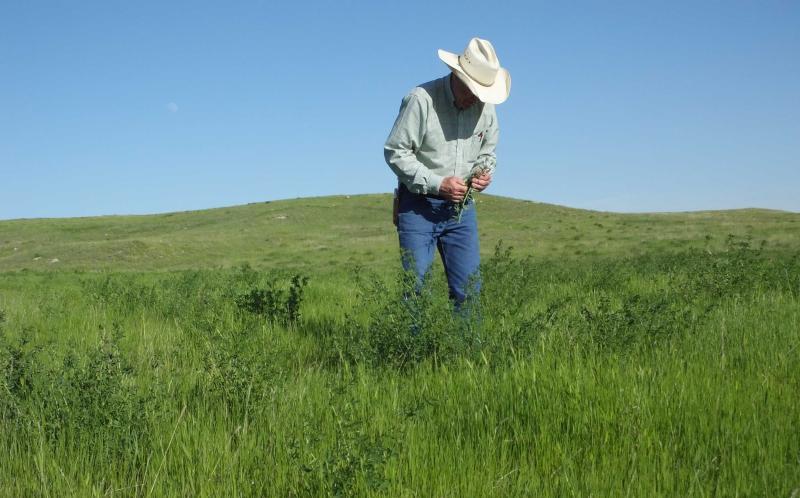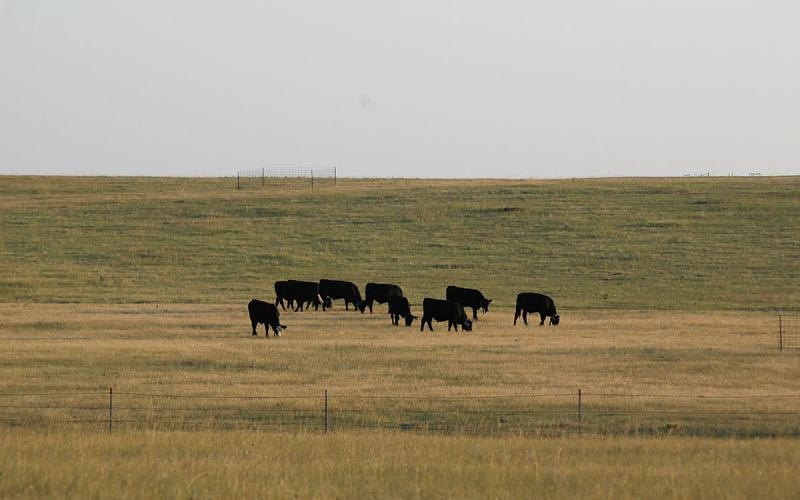Written with contributions by Adele Harty, former SDSU Extension Cow/Calf Field Specialist.
The Nitrate QuikTest for forages is available at various locations across the state. The Nitrate QuikTest for forages is designed to be used with standing forages prior to harvesting for hay or grazing. It allows producers to make decisions based on the presence or absence of nitrates and appropriate timing for cutting. This is a qualitative test. Therefore, if the results are positive, the recommendation will be to wait a few days and bring an additional sample in for re-testing. If it is negative, the hay can be cut without risk of nitrates. If the hay has already been cut and it tests positive, the recommendation will be to send a core sample in after the hay is baled, so that a representative sample can be collected and sent to a lab for quantitative analysis prior to feeding.
Collecting a Sample for Testing

A representative sample needs to be taken from different areas across the field to reflect topography and soil differences. These factors can affect nitrate levels. Select plants from at least 10 different areas and cut the plant at ground level, or pull it out of the ground, so that the lowest growth nodes can be tested. The more representative the sample, the better the test will work to identify potential nitrate concerns.
Be diligent about testing forages prior to haying or grazing to prevent the negative impacts that nitrates can cause, specifically in ruminant animals. If crops, such as wheat, fail to make grain, and producers plan to utilize it for a hay crop, test it for nitrates prior to harvest to determine the safety level. The higher levels of nitrogen fertilizer that are applied, the higher the risk for nitrate toxicity. Always err on the side of caution and have feeds tested.
Testing Locations and Certified Testers
Please contact your nearest location to have a Nitrate QuikTest completed. For specific questions on the test, contact Jaelyn Whaley.
SDSU Extension Regional Centers
- Aberdeen: Laura Edwards
- Lemmon: Robin Salverson and Jaelyn Whaley
- Rapid City: Clarence Winter and Brady Nicholaus
- Sioux Falls: Heather Gessner
- Watertown: Madison Kovarna


